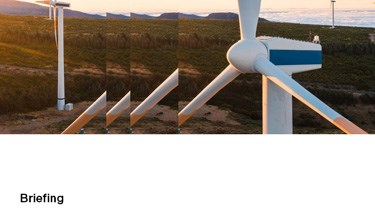EU Carbon Border Adjustment Mechanism – Public Consultation on Draft Implementing Regulation Until 11 July 2023
The European Commission (hereafter “the Commission”) is inviting interested parties to submit feedback on the draft Implementing Regulation which lays down rules for the application of Regulation (EU) 2023/956 establishing a Carbon Border Adjustment Mechanism (hereafter “CBAM” or “Regulation”), which entered into force on 17th May 2023.
Context
The CBAM is one of the key pillars of the “Fit for 55 package”, a roadmap of policy initiatives designed to make the EU’s economy more sustainable. The principal objective of the CBAM, which targets energy-intensive companies exporting specific goods into the EU, is to equalise the carbon price between domestic products and imports, addressing the risk of carbon leakage.
The mechanism is designed to accompany the phase-out of free emissions allowances under the EU Emissions Trading System (hereafter “EU ETS”) which will end in 2034 (see our previous News Alert for more information on the links with the EU ETS reform).
The CBAM will apply to imports from sectors at greater risk of carbon leakage: iron and steel, cement, aluminium, fertilisers, electricity generation, hydrogen, certain precursors as well as some downstream products such as screws and bolts and similar articles of iron or steel, with the exceptions of imports from third countries participating in the EU ETS or a similar mechanism (see Annex I of the CBAM for the concerned CN codes, hereafter “CBAM Goods”).
Transitional Phase
To allow companies and authorities to adequately prepare, the CBAM will be progressively “phased in”. The Regulation foresees a transitional period from 1st October 2023 to 31st December 2025, during which importers will be obliged to report emissions embedded in their goods without paying a financial adjustment.
The rules governing the reporting obligations of the CBAM during this phase and the provisional methodology for calculating the embedded emissions released during the production process of CBAM goods are now under consultation. Interested parties are invited to submit feedback until 11st July 2023 on the draft Implementing Regulation. At the end of the feedback period, the Commission will review and present the feedback to the CBAM Committee (a body in which ever EU Member State is represented). According to the examination procedure, the Commission is expected to formally adopt the Implementing Regulation by the end of the Summer, after a positive vote by qualified majority by the CBAM Committee.
The draft Implementing Regulation
During the transitional phase, importers of CBAM goods have a reporting obligation. By 31st January 2024 importers should submit a first report on the quantity of imported goods, embedded direct and indirect emissions and any carbon price paid in a third country in respect of goods imported during the fourth quarter of 2023. The obligation to report quarterly will end on 31st January 2026 with respect to goods imported during the fourth quarter of 2025.
The draft Implementing Regulation lists the information required to be submitted in these quarterly reports. The information includes the quantity and type of CBAM goods, as identified by their CN codes, embedded emissions and carbon price paid in the country of origin for embedded emissions.
Notably, the draft Implementing Regulation specifies the calculation methodology for embedded emissions and foresees two alternatives: determining emissions from source streams on basis of data obtained by measurement systems and laboratory analyses or data obtained by means of continuous measurement of relevant greenhouse gases. Exceptions are nonetheless foreseen until 31st July 2024, enabling importers to choose other calculation methods if not all necessary information from third country operators is available or if other methods lead to similar coverage and accuracy.
Dedicated IT tools, guidance and training materials will be made available to support importers in their reporting obligations. The draft Implementing Regulation also lays down the submission procedure for the reports and provides for the possibility to modify a submitted report until two months after the end of the relevant reporting quarter.
In case of failure to comply with the reporting obligations a penalty will be imposed for each tonne of unreported embedded emissions (between EUR 10 and 50).
End of the Transitional Phase
The draft Implementing Regulation contains provisions regarding the reporting obligations during the transitional period. Please note that, as of 1st January 2026, importers will also be subject to the financial impact of the carbon levy, as well as additional compliance obligations. Furthermore, only authorised CBAM declarants will be allowed to import goods into the customs territory of the EU; therefore, any importer established in a Member States must apply for the status of authorised CBAM declarant. See our previous News Alert for more information on the full CBAM regime.
Implications for Businesses
Following the publication of the draft Implementing Regulation, affected businesses are strongly advised to closely examine the draft and to submit their feedback on the draft text to weigh in on its final shape.
Additionally, preparing for the quarterly reporting obligations requires immediate action and companies should conduct data assessment in terms of data required on imported goods, embedded emissions and carbon prices paid in countries of origin of the CBAM goods or manufacturing locations.
Finally, it is important to remember that the scope of the CBAM is likely to be expanded in the near future to additional sectors, which is why it remains important to keep a close eye on further legislative developments in this domain. The Commission plans to conduct a review of the mechanism during its transitional phase and will prepare a report to the European Parliament and the Council with proposals (if necessary) to modify the regulation by mid-2025, before the entry into force of the definitive system. At the same time, the product scope of the CBAM will be reviewed to assess the feasibility of expanding it to include goods already covered by the EU ETS by 2030.
Moreover, a new calculation methodology for the definitive phase will be developed in 2025 and other Implementing Regulations on certain procedural aspects of the mechanism will be released and open for feedback in due time before the CBAM becomes fully operational.
Well
informed
Subscribe to our newsletter now to stay up to date on the latest developments.
Subscribe now








